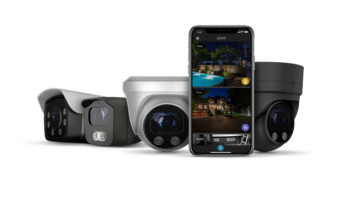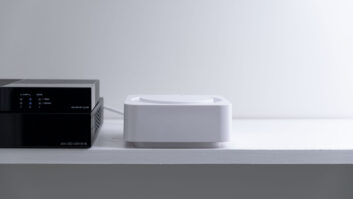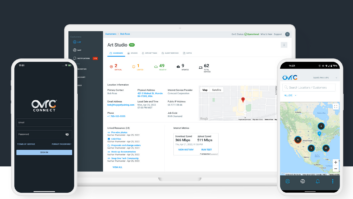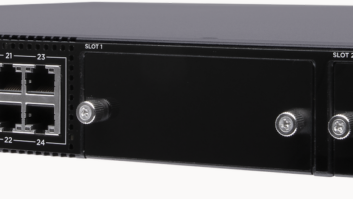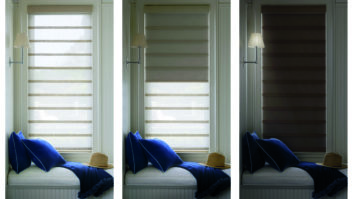In todays ever-changing media server market, larger and faster hard disk drives are vaulting content capacities to new heights, just as storage-hungry video takes a larger slice of the media server market. At the same time, intellectual property and digital rights management (DRM) issues seem to be drag a on video server proliferation; Microsofts Media Center, aided by Windows Vista and a growing cadre of Media Center partner companies, is making stronger incursions into what has traditionally been custom electronics territory; and media management (backup/archiving and replication) is assuming greater importance as customers build massive media collections.
The Established Players
With Media Center-based systems invading the media server market, what stance are the established players taking, and what matters most in their product category?
Quality and performance, backed by a proven media server heritage, seems to be the answer from such mainstays as Escient, ReQuest, and others. Reliability, is the word used by Bill McKeigan, VP of sales and marketing at ReQuest, to connote not only a products durability, but a dealers ability to rely on its manufacturer. A lot of that, he says, comes from time in the business. Its very easy to get into the media server business today, McKeigan explained. Take a Media Center PC, slap your name on it, and you become a music server company very quickly.
ReQuest has been staking out new product territory. The company, a pioneer in the media server category, in April began shipping a multi-zone audio system, under the iQ brand. Included in that is ReQuests most recent media server. Known as the iQ Media Server, the device has four simultaneous audio outputs to serve four zones, but in addition, it will provide up to five digital audio streams to computers. Assuming theres an Internet connection, McKeigan said, if somebodys away at the office, the iQ Server can stream right to his computer there.
Product quality is first and foremost for CodexNovus, according to Hugo Feugen, the companys president. There are many ways to damage a video signal as it comes across. And weve seen that in every which way. So weve concentrated on maintaining an extremely high-quality video chain, and as a result, delivering the utmost quality, in terms of the video that hits the screen.
Providing top-notch audio is just as important but easier to achieve if youve got the video element well in hand. We deliver pristine audio, Feugen said, simply because we dont do anything with it, except pass it right through. But for the video, inherently, we have to do a lot of things, and we do make sure that the video chain is perfect.
CodexNovus plans to use CEDIA EXPO this month to unveil its Media Controller 1 (MCC-1), which will be able to control up to eight media carousels at a time. And even then, Feugen said, multiple MCC-1s can be ganged together, such that you could have more polycarbonate media, in DVD terms, than probably has been published. That is, more than about 350,000.
Escient, long known for its Fireball products, is unveiling a new brand with the planned announcement of its fifth generation of media servers at CEDIA. The Escient Vision line will initially comprise four new products, including two media servers and one client. Vision is a whole new platform, noted Escient VP of product planning and development, Chris Commons. The new line will feature, a brand new, high-definition user interface.
The Vision media servers, capable of storing and serving up both audio and video, will have a standard-definition DVD player (up-converting). One model will have storage for about 200 hours of video or more than 1,500 hours of CD-quality audio, while the step-up model doubles that capacity. The Vision servers will have storage protection, Commons said, using two drives in mirrored configuration.
Like all of our Fireball products, Commons added, youll also be able to connect the Sony 400-disc changer, for physical disc-management.
The servers will be complemented by a Vision storageless client. You can use several Vision clients around the house to stream the audio and video from the Vision Servers to different rooms throughout the house, Commons noted.
The fourth product in the new line is pure storage, in Commons words, or network-attached storage (NAS). Its a four-bay NAS device that will have four terabytes of storage, in RAID 5 configuration, for data protection. That gives the Vision storage product capacity to hold more than 1,200 hours of video. Although Commons didnt have the audio capacity figure at his fingertips, it can be estimated at about 9,000 hours. All of the Vision products will talk to each other and the rest of the network over Gigabit Ethernet interfaces.
Crestrons Adagio Audio Server (AAS) is the music server component of the firms Adagio multiroom audio system. Available in 80-, 160- and 250-GB capacities, the AAS supports WMA, MP3, and uncompressed WAV file formats. It offers up to four discrete analog outputs, to serve as many audio zones independently. Its controllable via Ethernet or IR. Ethernet also lets any device running Windows Media Player or Apple iTunes access the AAS music library, while PCs can use the AAS as network-attached storage.
The Media Center Challenge
Exceptional Innovation, the company known for its Lifeware software and its home automation focus, has moved further into the hardware business and the multiroom AV market with its recent announcement of five media servers, branded Lifemedia. Ranging in storage capacity from 500 GB (for the LMS-300) to 4.5 terabytes (LMS-700), and with CPUs ranging from a 2.13 GHz Intel Core 2 Duo Processor to a 2.4 GHz Intel Quad Core Processor, the five models run the Microsoft Windows Vista Ultimate operating system. Announced in June, the Lifemedia servers are expected to begin shipping in September, according to EI VP of marketing, Mike Seamons.
Just as Lifeware leveraged the Media Center interface, bringing that same look and feel to home control, Seamons sees a whole new breed of Media Center Extender devices, codenamed Pica, and powered by Vista, bringing a consistent UI to customers control of their music and movies.
By way of explanation, Seamons paints a different, multi-vendor scenario, to illustrate the problem: If I have an Apple TV in one bedroom, a Tivo in another bedroom, an Xbox 360 in my game room, and a Netgear Digital Entertainer HD in my living room, all four of those boxes are going to use the media servers content, but none will look consistent, across the house. Users will have to learn to operate a different UI for each setting.
So, Seamons said, for people to really make effective use of a media server throughout the home, the media server has to have endpoints that make the delivery of the [listening /viewing] experience consistent from room to room. The implication is that if all media players are Vista-based Extenders, theres that consistent remote control and consistent on-screen experience, so that Im not re-learning something in two or three different rooms in the house.
Tim Cutting, co-founder and CEO of Niveus Media, also sees the debut of Windows Vista-based products as having tremendous import for Media Center. The biggest trend for Media Centerboth for Niveus and others in the Microsoft Media Server campis that 08 is really the year we go whole-home.
Weve had a great media server, Cutting explained. Niveus is specifically focused on audio and video quality. But to date, he continued, these servers have largely been going into home theaters. Until now, everything has been focused on the home theateralmost one-zoneexperience. But thats about to change, he said. This is the year we can really expand it out to the rest of the house.
Cutting looks for a number of new Windows Vista-based Media Center Extenders to be the key to taking Media Center multi-zone. Our server can support up to five extenders, in addition to the zone that the server can directly supply, for a total of six zones. Were working very hard with Microsoft, and with our own technology, to be able to push past that six-zone limitation, and we expect to have some good news in the year ahead.
Cutting added, One of the hottest features in our product is that we can send digital television out to multiple zones. So, a customer can buy our product, they can receive in conditional-access television [such as] HBO Premium channels, record up to two tuners of that, and send it out to up to six zones.
Cutting says that Niveus philosophy from Day 1 has been to be control-neutral. And along those lines, he noted, One of the things well be announcing at CEDIA is our Niveus Control Server 3.0, middleware [software that allows different systems to interoperate] that lets control systems from AMX, Crestron, ELANany control vendor, reallywork with the Media Center. Itll be backward-compatible with stuff that weve previously shipped.
Russound will hop on the Media Center bandwagon as well this year, with its CEDIA EXPO debut of the six-product Smart Media Console line. The products, based on the Intel Core 2 Duo processor and running Windows Vista, will be equipped with RF keyboards and remote controls. Customers can choose among models having either an ATSC or NTSC tuner card, or a CableCARD slot.
Capacity and media protection are points of strength for media server vendor Xperinet, according to the firms president, John Cox. Our product is infinitely expandable, he said. You can buy a 4.5-TB server, and then add another 4.5-TB chassis to it, and another, and another, and have 100 TB of storage, if thats what you need.
For media protection, Xperinets servers use RAID 5 or, what the company calls double redundant RAID 6. The RAID 6 models assign two hard drives to store parity bits (computed checksums, which are used for error detection and correction). With this arrangement, Youd have to have three drives fail simultaneously in order to have a loss of data, Cox said.
Several key considerations should be kept in mind, Cox says, when choosing a media server. One consideration is to have a synchronization technology. Weve implemented an excellent protocol for synchronizing content among multiple servers, for customers who have multiple homes, he said. And in this product category, all the customers have multiple homes. Its very valuable to them to be able to load a movie in one location and have it automatically replicate to the others.
Its also important that a systems media clients (players) be capable of decoding 1080p content. Most of the video storage systems on the market will scale up to 1080p, but they wont actually decode native 1080p content, Cox said. Ours will.
Cox also suggested that dealers and their customers consider the breadth of formats that the decoder will support. Looking toward the future, as more movie content becomes available for download from the Web, its going to be encoded in different formatsin Windows Media, in DivX, in MPEG4 Part 10. And so, making sure that your player has the flexibility to decode a broad array of formats is a valuable element in future proofing. The latest generation of products that Xperinet will show at CEDIA supports all those formats, Cox said.
Flexibility in terms of media players is yet another consideration. At this months CEDIA EXPO, Xperinet will introduce a very small chassis design that is fanless, and at only 5×9 inches by 1 inch in thickness, it is small enough to mount on the wall behind the plasma display. All you have to do is run a Cat-5 cable to the plasma location, mount this player on the wall behind the plasma, and you now have a local zone with full library control, Cox said. Having a really small footprint for a decoder like that gives you considerable flexibility for installations and locations that dont have an equipment rack.
Cox also underscores the importance of the player being fanless, and hence, quiet. Some of these installations end up in bedrooms, he noted. In a bedroomwhen all the lights are off, in the middle of the night, even a device emitting only 28 dB sounds like a hurricane.
Alan R. Frank ([email protected]) is a networking consultant and freelance writer covering the fields of communications, networking, and digital entertainment.

